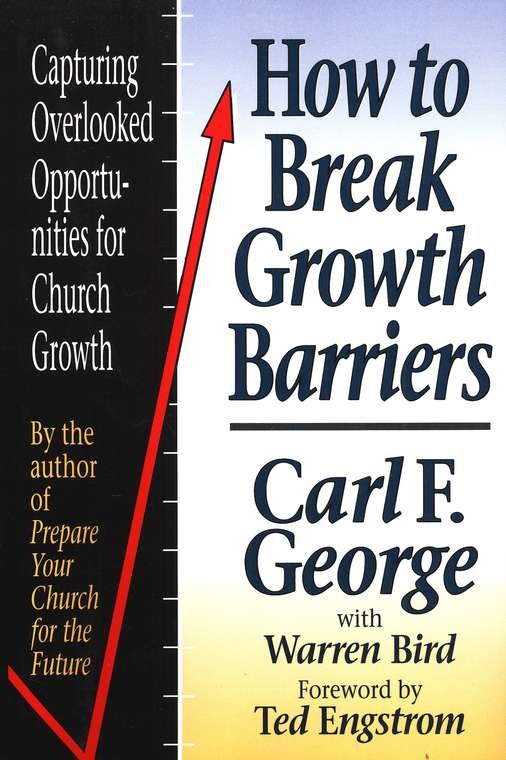Carl F. George and Warren Bird, How to Break Growth Barriers: Capturing Overlooked Opportunities for Church Growth. Baker, 1993.
Referenced in: Church Leadership – Size Dynamics and Transitions
LifeandLeadership Summary
This is a long-recognized classic on the subject of church growth in general, and size transitions in particular. Concepts such as “sheep-herder vs. rancher,” “caregiver or maker of caregivers,” etc., while not necessarily owing their origin to George and Bird, were certainly popularized by them. The book is divided into three parts: Identify Your Vision, Learn How to Ranch, and Break Significant Growth Barriers.
Part 1 – Identify Your Vision, obviously deals with how leaders conceptualize and articulate growth possibilities for their congregation, how to increase one’s visioning abilities, how to identify common vision limiters, the role of prayer in vision discernment, how vision motivates, finding a growth model God is blessing, and developing a growth bias. The authors reflect the church growth philosophy and follow the leader-directed vision model.
Part 2 – Learn How to Ranch, is perhaps the most helpful section, whether applied to size transitions or not. It discusses the difference between conceiving of the minister’s role as a sheep-herder (i.e. primary care giver to all the members) vs. rancher (one who trains other caregivers, resulting in more shepherds for potentially more sheep). His lists of ten characteristics of each is perhaps the best available on this subject. He also provides a nice evaluative instrument to help leaders know where they fall on the spectrum. Most other authors who describe the essential change of leadership posture for church size transitions either assume or refer to this concept, and most attribute it to Carl George as developed here. Alongside this is a discussion of “problem people,” including George’s famous “Berry-Bucket Theory,” which elevates the importance of paying close attention to existing members while gaining new members (this theory is developed most fully in ch. 10 of Carl George and Robert Logan’s Leading and Managing Your Church). He also insists that the “problem person” may be the minister himself who uses ministry to satisfy unmet emotional and spiritual needs.
Part 3 – Break Significant Growth Barriers, is the section most applicable to size transitions. This includes a description of the 200, 400, and 800 growth barriers. Admittedly, this is not the strength of the book. Those who minister in smaller to mid-sized churches, and who are familiar with McIntosh’s Taking Your Church to the Next Level, as well as resources targeting the 200 barrier (e.g. Martin’s Myth of the 200 Barrier) will find them more realistic and helpful. However, George’s chapter 12 on “How to Break the Care Barrier,” is quite good. Here he develops the concept of “creaming” vs. “developing” leaders, which requires that the congregational leader operate from a meta-church perspective of developing leaders who develop other leaders. He says,
the critical event in a Meta-Church revolves around the intimacy of the family unit or spiritual-kinship unit facilitated by a lay minister who has a limited span of care (about ten people) and who has access to training in the social and leadership skills necessary to pull this off and to replicate himself or herself through and apprentice. (195)
While this is not a chief resource on size transitions or church growth/health in general, it is an important supplement.
From the Publisher
At last—-church-growth advice with something new to say! Pastors and lay church leaders who want a more effective ministry will get expert coaching from George. You’ll learn how to delegate important tasks to members of your congregation, how to craft a systematic approach to pastoral care, and how to identify and work around discouraging barriers that keep your church from growing. Forget the ”super-pastor” stereotype—-these concepts apply to real-life leaders with churches of any size.
***For additional information on this resource, including reviews, click the bookstore links. Check the reference at page top or the links below for resource guides on related topics.***
See Resources on Over 100 Areas of Ministry Leadership:


